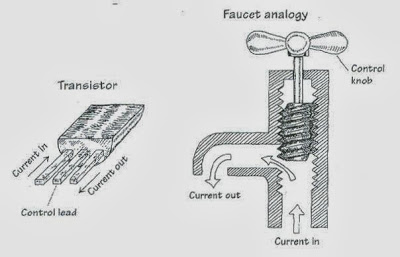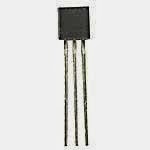Of Switch Mode Power Supply
Troubleshooting linear power supply was quite easy as compare to switch mode power supplies (SMPS). AC voltage enters to the primary side of linear transformer and then converted the AC into a lower or higher AC voltage depending on the secondary winding. The output AC voltage is then rectified and filtered by a diode and capacitors to produce a clean DC voltage.
If there is a problem in the linear transformer circuit, I can say that it is very easy to locate the fault. This is somehow different in the case of a switch mode power supply. The designs were complicated and some technicians found it quite hard to fully understand how the switch mode power supplies work.
The working principle of switch mode power supply is different from the linear type. First the AC voltage will enter to a full wave rectifier (bridge rectifier) which produces an uneven DC output and then filtered by a large capacitor (usually 220 micro farad and up to 450 volts).
If there is a problem in the linear transformer circuit, I can say that it is very easy to locate the fault. This is somehow different in the case of a switch mode power supply. The designs were complicated and some technicians found it quite hard to fully understand how the switch mode power supplies work.
The working principle of switch mode power supply is different from the linear type. First the AC voltage will enter to a full wave rectifier (bridge rectifier) which produces an uneven DC output and then filtered by a large capacitor (usually 220 micro farad and up to 450 volts).
The clean DC voltage will then enter to start up resistors and to the input of switch mode power transformer. Once the voltage passed through the high ohms resistor (start up resistors) the voltage would drop to a value where it then enters to the VCC supply pin of Pulse width modulation IC.
Once the PWM IC received the voltage it will output a signal to drive the transistor (or FET) and produces a changing in magnetic field in the transformer primary winding. The changing magnetic field induces voltage in the secondary windings.
Each of these AC voltage produced by the secondary windings is then rectified, filtered, and regulated to produce a clean DC voltage. One of the main DC output voltage is the B+ that supply to flyback transformer (for TV and Monitor Circuit)
The output from the B+ voltage supply is then connected, through a “feedback” loop (which consist of optoisolator ic and an error amplifier TL431 IC), back to the PWM IC. When the voltage from the B+ supply rises or drop a bit, the PWM IC will act to correct the output.
You must ask your self what is the purpose and its function of the components in the SMPS circuit and how to check them if they fail. Find out the function of these components in SMPS circuit:
Bridge rectifier,
Filter capacitor, Start up resistors Chopper/Power FET
Pulse Width Modulation (PWM IC) Current sense resistor Switch mode power transformer Optoisolator/optocoupler Error Amplifier IC (TL431) Secondary diodes Secondary filter capacitors
Push yourself further by searching the internet for the datasheet of a PWM IC part number. For example, UC3842 PWM IC is mostly used in SMPS. Do you know what the function of pin 5 of this IC is? Do you know which pin is the supply voltage (VCC)? Do you know what is the actual voltage that enters to the IC? Do you know which pin that drives the power FET? Can I get a replacement for this IC? And so on………
Let’s take a soldier as an example. Soldiers not only good in handling rifle but also knows all the details about it. They know how to dismantle and assemble back their rifle fast (imagine in the middle of war the rifle jammed-they can repair it fast). They know how much each bullet cost, how far the shooting distance, how big is the diameter of the bullet, how many cm the length of the bullet and so on. Hope you don’t get bored with the soldier’s story, did you get the ideas?
Any SMPS that comes across my repair bench, I would not immediately repair it, in fact I will take couples of minutes to analyze the circuit design and see it from all angles before I begin to repair. Troubleshooting SMPS is not limited to only one procedure in fact many electronic repairers have their own unique ways and methods to solve SMPS problems. Some prefer to use light bulb to isolate SMPS faults while others like to use resistors. Troubleshooting SMPS is fun and flexible but in some cases could make you get very frustrated too.
Remember, don’t limit yourself to only one or two sources to get you understand and be able to repair SMPS. If you have the budget, get the books that have related to SMPS repair-study and start doing practical about it. Share your problems with other fellow electronic repairers and the most important thing is don’t give up. There’s lot of mountain in the journey of our live and you yourself have to climb and conquer it. All the best!
Each of these AC voltage produced by the secondary windings is then rectified, filtered, and regulated to produce a clean DC voltage. One of the main DC output voltage is the B+ that supply to flyback transformer (for TV and Monitor Circuit)
The output from the B+ voltage supply is then connected, through a “feedback” loop (which consist of optoisolator ic and an error amplifier TL431 IC), back to the PWM IC. When the voltage from the B+ supply rises or drop a bit, the PWM IC will act to correct the output.
You must ask your self what is the purpose and its function of the components in the SMPS circuit and how to check them if they fail. Find out the function of these components in SMPS circuit:
Bridge rectifier,
Filter capacitor, Start up resistors Chopper/Power FET
Pulse Width Modulation (PWM IC) Current sense resistor Switch mode power transformer Optoisolator/optocoupler Error Amplifier IC (TL431) Secondary diodes Secondary filter capacitors
Push yourself further by searching the internet for the datasheet of a PWM IC part number. For example, UC3842 PWM IC is mostly used in SMPS. Do you know what the function of pin 5 of this IC is? Do you know which pin is the supply voltage (VCC)? Do you know what is the actual voltage that enters to the IC? Do you know which pin that drives the power FET? Can I get a replacement for this IC? And so on………
Let’s take a soldier as an example. Soldiers not only good in handling rifle but also knows all the details about it. They know how to dismantle and assemble back their rifle fast (imagine in the middle of war the rifle jammed-they can repair it fast). They know how much each bullet cost, how far the shooting distance, how big is the diameter of the bullet, how many cm the length of the bullet and so on. Hope you don’t get bored with the soldier’s story, did you get the ideas?
Any SMPS that comes across my repair bench, I would not immediately repair it, in fact I will take couples of minutes to analyze the circuit design and see it from all angles before I begin to repair. Troubleshooting SMPS is not limited to only one procedure in fact many electronic repairers have their own unique ways and methods to solve SMPS problems. Some prefer to use light bulb to isolate SMPS faults while others like to use resistors. Troubleshooting SMPS is fun and flexible but in some cases could make you get very frustrated too.
Remember, don’t limit yourself to only one or two sources to get you understand and be able to repair SMPS. If you have the budget, get the books that have related to SMPS repair-study and start doing practical about it. Share your problems with other fellow electronic repairers and the most important thing is don’t give up. There’s lot of mountain in the journey of our live and you yourself have to climb and conquer it. All the best!
(full+permission)-2.bmp)
(full+permission)-3.bmp)
(full+permission)-3.bmp)
(full+permission)-4.bmp)
(full+permission)-5.bmp)
(full+permission)-6.bmp)
(full+permission)-7.bmp)
































